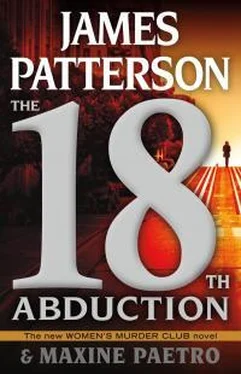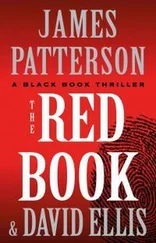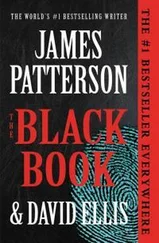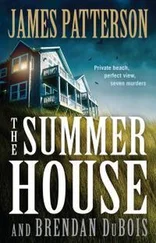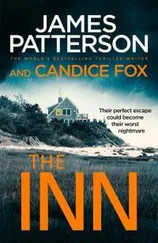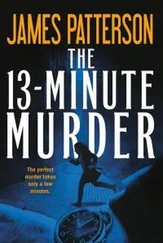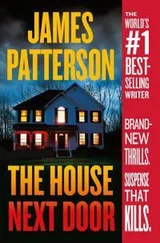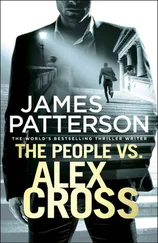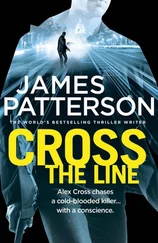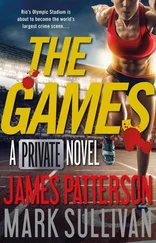At that moment we were watching the television hung high on the wall of the bullpen and centered directly over my desk and Conklin’s.
On-screen, Jacobi was being interviewed by Kathy Cabot, a reporter from an NBC affiliate. Cabot was asking him to fill in the public on the missing schoolteachers.
Jacobi looked reassuringly in charge when the reporter said, “Lieutenant, people are frightened. What can you tell us about the Carly Myers murder?”
Jacobi said, “As has been recently reported, Carly Myers is a victim of a homicide. I’m sorry that I can’t give you any details on our investigation, which is in progress.”
“Do you have any information about Susan Jones? Adele Saran?”
Jacobi took two photos from inside the breast pocket of his coat and held them so that the camera could get a fix on them. “Susan Jones and Adele Saran have been missing since late Monday night. The entire police force is looking for them. The mayor has just authorized a twenty-five-thousand-dollar reward for information leading to the arrest and conviction of Carly Myers’s killer, and the same amount each for information leading to the recovery of Susan Jones and Adele Saran. Call our hotline…” Jacobi read off the number.
Ms. Cabot had prepared for this announcement. The information appeared on the screen. She asked the public for their help, thanked Jacobi, and signed off, returning the viewing audience to the studio.
The camera took a parting shot of Jacobi climbing the stairs to the Hall. The shot was wide enough to take in the patrol cars blocking the press from coming into the building.
Back in the squad room, over a dozen worried and restless cops were feeling the pressure of the complicated unsolved homicide, plus our two missing persons.
I picked up the remote and muted the TV, gesturing at Conklin to take the floor.
Chapter 36
Conklin leaned the whiteboard against the easel we’d set up at the front of the room.
Behind me, cops had wheeled chairs into the aisle of our small, crowded bullpen. They all knew the faces of the schoolteachers, but even so, I clipped their photos to the top of the board.
Lemke moved closer and said, “Damned shame, Boxer. We’re going to find them.”
Cappy McNeil stood and faced the group. A heavy, bald man with a bulldog face and a gravelly voice, Cappy sounded depressed as he summarized the notes he and Paul Chi had gathered from their interviews with twenty-six motel guests.
“The interviews fall into three types,” he said. “‘Don’t know anything about it,’ ‘Didn’t see anything,’ and ‘Was in my room minding my own business. Can I go now?’”
There was a smattering of laughter, then Cappy summed up the guests’ rap sheets. None of the twenty-six were totally clean, but there were no suspects convicted of crimes against persons.
Paul Chi took over for his partner. Chi had a sharp mind and a mild manner. Many saw him as having a big future in the SFPD.
He told the group that news of the murder and presumed kidnappings had gone viral. The parents had been interviewed and had made pleas for information, telling their daughters, “If you’re watching, we love you. We want you home.”
From the blanket coverage in all media, including social, the tip lines had yielded a flood of phone traffic but very little actionable information.
Chi said, “As of an hour ago we have one promising lead. Edna Gutierrez, who works at a nearby laundromat. She called in a description of a man in a dark-colored SUV who had dropped off a woman who looked like Carly Myers in front of the Big Four Motel at around 10:00 p.m. last Tuesday night.
“Ms. Gutierrez came in to see the lieutenant this morning. Boxer, you have the tape?”
I cued up the audio of Ms. Gutierrez relaying these facts to Jacobi, boosted the volume, and let it roll.
Ms. Gutierrez told Jacobi that the SUV looked new and it was black or blue. The windows were too dark for her to see any more of the driver, and she couldn’t give any kind of description. But she firmly believed that the woman he’d dropped off in front of the motel’s office was Carly Myers.
“I’m sure it was her. Almost sure.”
Hardly bulletproof testimony, but it was something.
I had diagrammed the whiteboard, pinpointing the dates and highlights of the case. I used a laser pointer to give me something to do with my hands.
I took the squad through the last five days, from the time the three women ordered dinner and drinks at the Bridge. I’d inked in a big black star on the board over the words Day Three, Thursday.
I said, “This was the day that the motel manager, Jake Tuohy, called us to report the dead body hanging in the shower of room 212. He told us—and this is unconfirmed—that Carly Myers was turning tricks. Also reported by Tuohy, she may have had a pimp called Danny or Denny. He can’t or won’t describe him.”
I asked the room, “Anyone know of such a person?”
No one answered, but I saw some taking notes.
I said, “There’s another missing person. Nancy Koebel is the housekeeper who found the body.”
I laid it out.
According to Tuohy, after Koebel told him about the body, she was hysterical, grabbed her purse, and ran out to the street, never to be seen or heard from since. We had no picture of her. Her phone was a prepaid burner, and she wasn’t answering our calls.
Conklin added, “She may have been spooked by the murder, or maybe the doer saw her and she has good reason to be freaked. She’s a critical witness.”
Inspector Joy Robinson piped up from the back. “Or the killer knows her and offed her to stop her from talking.”
Conklin nodded, put down his pointer. “Alive or dead, we need to find her. Alive is preferable.”
We all looked toward the squad room entrance when someone entered, standing off to the side of Brenda’s desk.
“Sorry to interrupt,” he said into the silence.
John Clark was a senior video tech from our forensics lab. I knew him, and when I read his expression, I felt a small surge of hope.
“You’ve got something?” I asked.
“Maybe,” Clark said. “I think maybe I do.”
Chapter 37
As soon as Clark made his report, I called an impromptu working lunch with my best friends and members of the Women’s Murder Club.
We were all working that weekend—that’s how alarmed we were that the women were still freaking missing.
The Women’s Murder Club met at MacBain’s, the bar and grill located across and down the street from the Hall of Justice. We had all arrived by quarter to twelve, before the lunchtime crush, to snag our favorite spot: the small table with high stools by the window at the front of the room. With luck, we’d get our order in to the kitchen before it was overwhelmed.
We’d done this for years, since Cindy helped me solve a gruesome double murder back in the day. She had jokingly named us the Women’s Murder Club and it had stuck. Now, whenever any of us had a knotty problem, love or work or what not to wear, the four of us would get together and kick it around.
I signaled to Sydney MacBain, our favorite waitress, and she hustled over to take our order, the usual—burgers, fries, and beer times four. She gave a rare smile, told Claire she looked pretty in pink, and headed off toward the kitchen. Meanwhile, the room was filling up. The jukebox was rocking. And laughter ricocheted from wall to wall.
This was a conference, but apart from being geographically desirable, MacBain’s was nothing like a conference room. We put our heads together, literally, so that we could hear and be heard. Cindy was sworn to keep everything we said off the record, and she snorted her annoyance. “When are you going to trust me, hmmm? How many more years?”
Читать дальше
